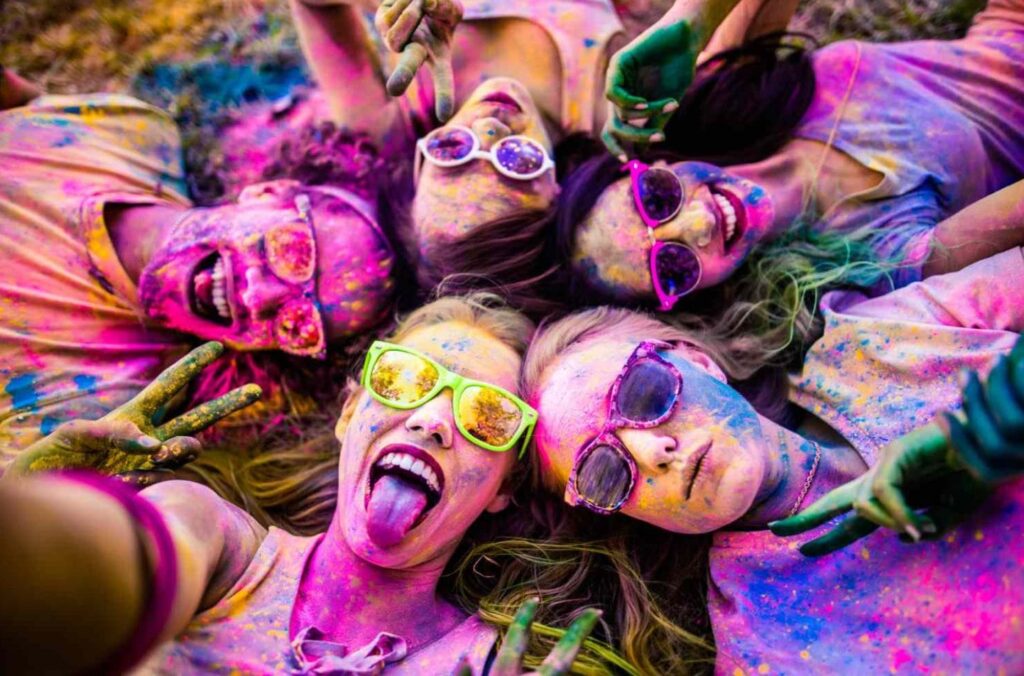Introduction
Every visual stimulus processed by the human conceptual pathway carries color-related information. In this case, the human brain is wired to focus on things of contrasting colors in their surroundings. From a scientific perspective, color is the first element that people notice when evaluating something. Although greatly ignored, color is a powerful communication tool that triggers actions, changes moods and emotions, and influences physiological responses.
Triggering Actions
The meaning of a given color is elicited by stimulus qualities, considering that emotions and other reactions are triggered just by exposure to it. According to Labrecque (2020), biological responses to color, such as elevated heartbeat or attentiveness, are influenced by color’s embodied meaning, and some learned color associations may constitute a cognitive reinforcement or modification of biologically grounded behaviors (p. 856). Long-wavelength hues, such as red, can enhance arousal and improve attention. However, while color influences emotional and behavioral states by evoking a range of actions, their association varies across places, cultures, and personalities, while sensitivities to color stimuli may be evolutionarily ingrained.

Changing Moods and Emotions
Color has a more significant impact on human lives than anticipated, as it can have a profound effect on moods and thoughts, changing the individual’s emotions toward someone or something. Choi et al. (2020) found that discrete colors change emotions differently, where the red color stimulates violence in a contest setting, enthusiasm in a relationship-based context, and caution in a competitive task, owing to the learned link between the color and its meaning in a specific setting (p. 3). The physical light stimulation of color on people’s physiology also has a direct impact on their emotional response, mood, behavior, and mental state in a specific environment. Therefore, the psychological implications of color do not stop at the surface realm of perception but further contribute to more profound subconscious processes, like association, reasoning, and cognitive health.
Influencing Physiological Responses
Humans are subjected to both apparent and subconscious color correlations with different themes, interactions, and circumstances throughout their lives and through the conditioning of color symbolism, and the pairings develop potent hue ties in physiological responses with repetition. In their study, Kareklas, Muehling and King (2019) showed that the referential connotation approach for color effects is based on the concept of a network of associations in which color stimuli activate nodes related to information captured by the brain (p. 34). As a result, over time, the individual’s mind can be trained to link the red color with danger or violence or with thoughts congruent with a personal view. Hence, color-associated concepts significantly affect mental and emotional states, which stimulate human moods, but reactions are subjective to a specific person.
Conclusion
Color influences human behaviors and moods through a cascade of impulses as a response to external forces. Background, environmental, or object color affects human behaviors by evoking actions, changing moods and emotions, and affecting physiological responses that determine the decision-making process. Despite multiple studies on the subject, the social impact of colors on the human psyche remains uncertain, and, while it can influence how individuals behave and feel, its effect is inspired by personal, cultural, and contextual variables.
Reference List
Choi, J et al. 2020, ‘Opposites attract: Impact of background color on the effectiveness of emotional charity appeals,’ International Journal of Research in Marketing, vol. 37, no.3, pp. 1–17, viewed 2 July 2023, DOI: 10.1016/j.ijresmar.2020.02.001.
Kareklas, I, Muehling, DD & King, S 2019, ‘The effect of color and self-view priming in persuasive communications,’ Journal of Business Research, vol. 98, pp. 33–49, viewed 2 July 2023, DOI: 10.1016/j.jbusres.2019.01.022.
Labrecque, LI 2020, ‘Color research in marketing: Theoretical and technical considerations for conducting rigorous and impactful color research,’ Psychology & Marketing, vol. 37, no. 7, pp. 855–863, viewed 2 July 2023, DOI: 10.1002/mar.21359.


